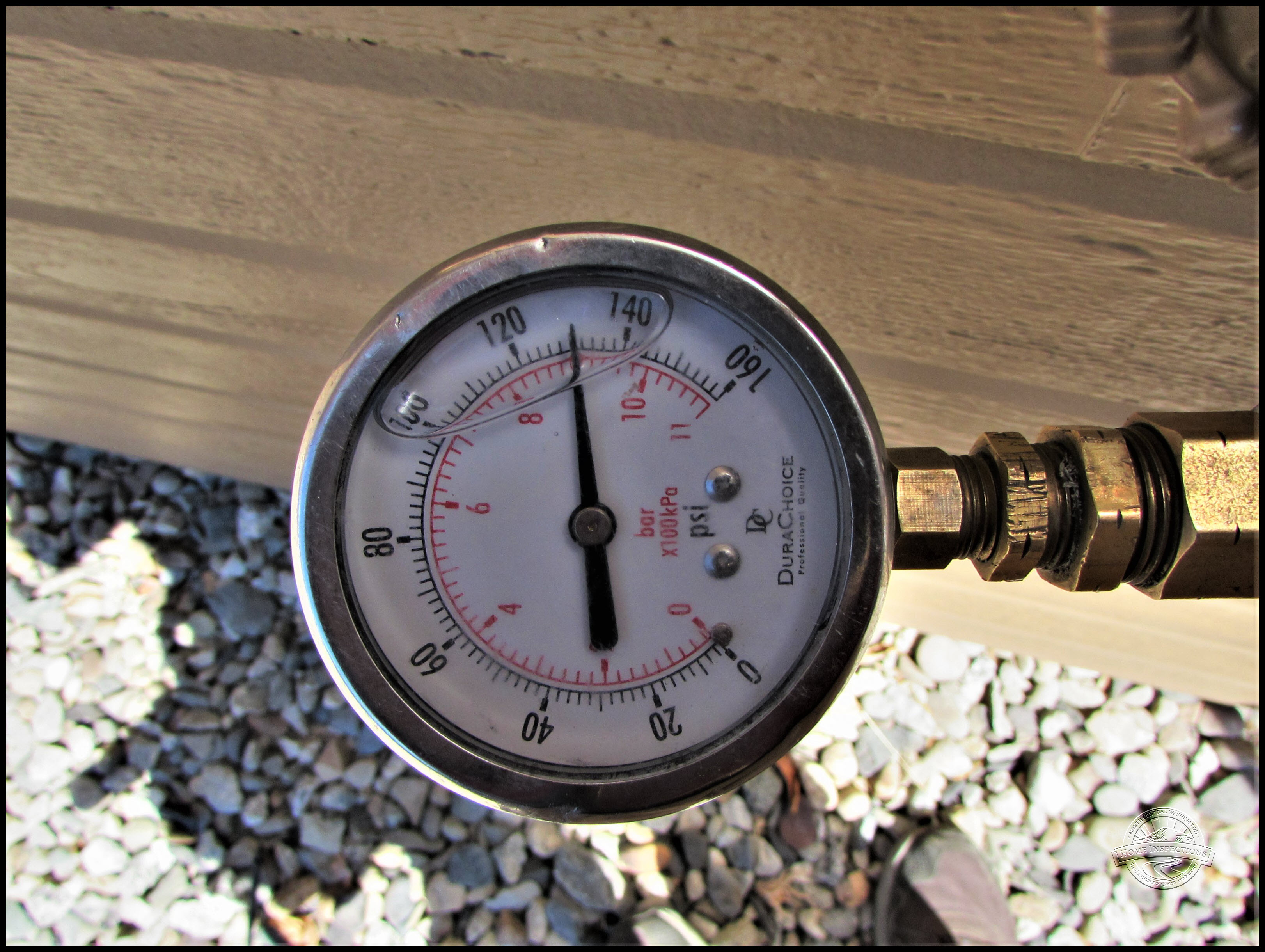Getting High- Water Pressure


So you have high water pressure on the plumbing system. What should my water pressure be in the home? This is a great question and should look for some of the answers.
From the 2015 UPC
608.2 Excessive Water Pressure.
Where static water pressure in the water supply piping is exceeding 80 psi (552 kPa), an approved-type pressure regulator preceded by an adequate strainer shall be installed and the static pressure reduced to 80 psi (552 kPa) or less.
Pressure regulator(s) equal to or exceeding 1-1/2 inches (40 mm) shall not require a strainer. Such regulator(s) shall control the pressure to water outlets in the building unless otherwise approved by the Authority Having Jurisdiction.
Each such regulator and strainer shall be accessibly located above ground or in a vault equipped with a properly sized and sloped bore sighted drain to daylight, shall be protected from freezing, and shall have the strainer readily accessible for cleaning without removing the regulator or strainer body or disconnecting the supply piping. Pipe size determinations shall be based on 80 percent of the reduced pressure where using Table 610.4.
An approved expansion tank shall be installed in the cold water distribution piping downstream of each such regulator to prevent excessive pressure from developing due to thermal expansion and to maintain the pressure setting of the regulator. Expansion tanks used in potable water systems intended to supply drinking water shall be in accordance with NSF 61. The expansion tank shall be properly sized and installed in accordance with the manufacturer’s installation instructions and listing. Systems designed by registered design professionals shall be permitted to use approved pressure relief valves in lieu of expansion tanks provided such relief valves have a maximum pressure relief setting of 100 psi (689 kPa) or less.
608.1 Inadequate Water Pressure.
Where the water pressure in the main or other source of supply will not provide a residual water pressure of not less than 15 pounds force per square inch (psi) (103 kPa), after allowing for friction and other pressure losses, a tank and a pump or other means that will provide said 15 psi (103 kPa) pressure shall be installed. Where fixtures, fixture fittings, or both are installed that require residual pressure exceeding 15 psi (103 kPa), that minimum residual pressure shall be provided.

From IAPMO
“A limit of 80 psi (551.6 kPa) is the maximum static pressure of any water supply system. The reason for this is to reduce water hammer, unnecessary use of water, splashing, excessive discharge of pressure relief valves and to protect appliance and fixture valves and mechanisms from pressure that exceeds their design limits. Any installation with pressures above 80 psi will require a pressure regulating valve to limit the pressure to 80 psi or below (see Figure 608.2).
By design, pressure regulating or reducing valves are modulating valves, which have a high level of flow resistance and consequent pressure drop through them even when fully open. Therefore, pipe sizing downstream of the pressure regulator must be based on “worst-case” pressure loss during a maximum demand water flow. Worst-case pressure loss through a listed pressure regulator is presumed to be no greater than 20 percent; therefore, the water system is sized based upon 80 percent of the pressure regulator’s “set” pressure, this being a selected static pressure that is presumed not to exceed 80 psi. Therefore, all pipe size determinations downstream of the regulator must be based on 80 percent of this reduced pressure when using Table 610.4.
For example, a water system has a pressure of 100 psi. A pressure regulator will be installed and set at 80 psi. For sizing purposes using Table 610.4, the maximum pressure would be 64 psi, which is 80 percent of 80 psi.”
Residential water pressure typically is between 40 and 80 psi (pounds per square inch). I always considered 55 to 65 psi to be the sweet spot. For many pressures below 40 psi is considered low and pressures below 30 psi is considered too low; the minimum pressure required by the UPC is 15 psi. You may find lower water pressures on well systems.
With water pressures above 80 psi are considered too high. Low water pressure is more of a nuisance than a serious problem (some fixtures, like washing machines, have minimum pressure requirements), high water pressure carries with it a significantly increased risk of damage to pipes, joints, fixtures and seals.
Low Water Volume… High Blood Pressure (some symptoms)
High water pressure can effect appliances also and lead to early failures. Most dishwashers and machine machines manufacturers have a minimum water pressure requirement but high water pressure can often voids the warranty on appliances.
If the manufacturer can attribute the appliance failure to high pressures you may be on the hook for the replacement costs.
If you find any errors or have additional information that would expand on any code, building standards or manufacturer requirements please let me know.
NCW Home Inspections, LLC is a Licensed Washington State Home Inspection service located in Wenatchee Washington serving Chelan County, Douglas County, Kittitas County, Okanogan County and Grant County Washington and the cities of Wenatchee, Leavenworth, Cashmere, Oroville, Cle Elum, East Wenatchee, Quincy and many more…
Your Wenatchee and Chelan Professional Real Estate, Home and Structural Pest Inspection Service
Coordinator & Instructor- Fundamentals of Home Inspection- Bellingham Technical College
Former WA Home Inspector Advisory Licensing Board
www.ncwhomeinspections.com 509-670-9572
You can follow me on Facebook, Twitter, Google+ and on my website Blog.


